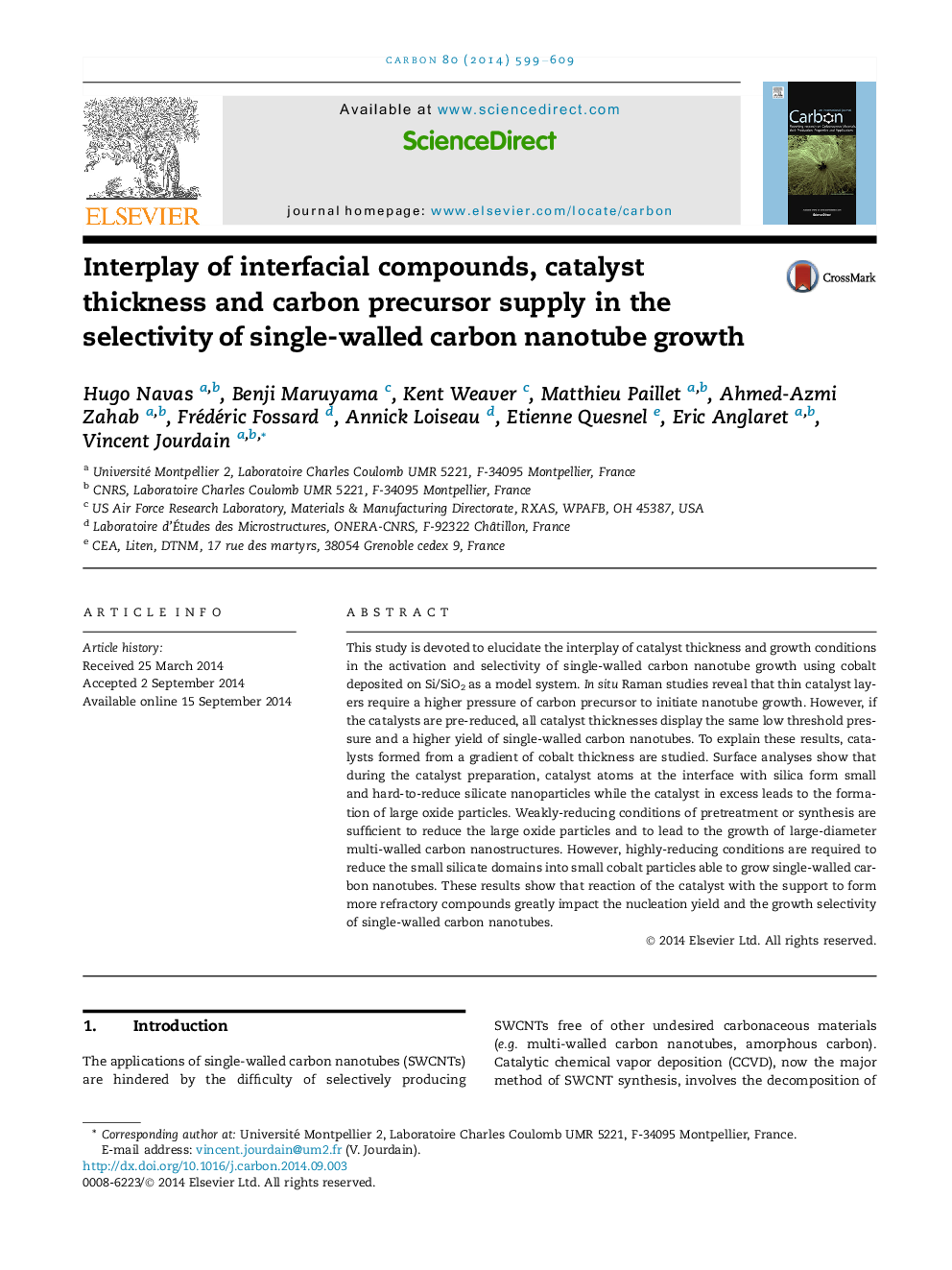| Article ID | Journal | Published Year | Pages | File Type |
|---|---|---|---|---|
| 1413759 | Carbon | 2014 | 11 Pages |
This study is devoted to elucidate the interplay of catalyst thickness and growth conditions in the activation and selectivity of single-walled carbon nanotube growth using cobalt deposited on Si/SiO2 as a model system. In situ Raman studies reveal that thin catalyst layers require a higher pressure of carbon precursor to initiate nanotube growth. However, if the catalysts are pre-reduced, all catalyst thicknesses display the same low threshold pressure and a higher yield of single-walled carbon nanotubes. To explain these results, catalysts formed from a gradient of cobalt thickness are studied. Surface analyses show that during the catalyst preparation, catalyst atoms at the interface with silica form small and hard-to-reduce silicate nanoparticles while the catalyst in excess leads to the formation of large oxide particles. Weakly-reducing conditions of pretreatment or synthesis are sufficient to reduce the large oxide particles and to lead to the growth of large-diameter multi-walled carbon nanostructures. However, highly-reducing conditions are required to reduce the small silicate domains into small cobalt particles able to grow single-walled carbon nanotubes. These results show that reaction of the catalyst with the support to form more refractory compounds greatly impact the nucleation yield and the growth selectivity of single-walled carbon nanotubes.
